Are you looking for high protein vegan snacks? You are in the right place!
In this article we cover everything you need to know about how to meet your protein needs on a plant-based diet.
Before we jump in, remember to grab your copy of my free Plant Forward Meal Prep Made Easy Guide. In this guide, I show my proven method for meal planning and prep. If you are interested in nutrition counseling to help ease your transition to a plant-based and plant-forward diet, visit my services page.

Disclaimer: this article is for education and informational purposes only. It is not medical advice. Seek the individualized support of a healthcare provider in your area.
Table of Contents
What is a vegan snack?
A vegan snack is a snack that does not include any animal products. This includes honey, gelatin and anything derived from an animal like whey or casein protein.
The term snack is not universally defined. But, in general, it is considered to be a small meal in between meals. From a nutritional perspective, a balanced snack contains fat, fiber and protein. And, most importantly, it should taste good!
What are the benefits of snacking for vegans?
Snacks get a bad rap from diet culture. However, snacks are a great opportunity to boost your overall nutrition, whether you are a plant-based eater or not.
Here are some benefits of snacks:
- Provide nourishment on the go
- Offer sustenance before and after workouts
- Helpful for people that can only eat small meals due to health conditions
- Allow you to make up for any nutrients you may be under consuming in your diet
- Keep you full, focused and productive for important tasks in your life
How do we define high protein vegan snacks?
As defined by the US Food and Drug Administration, high protein foods have 10 or more grams of protein per serving. A good source of protein is defined as between 5 and 9.5 grams of protein.
Why is protein important?
Proteins are large molecules made up of smaller molecules called amino acids. When we digest protein, our body brlveaks it down into amino acids. Those amino acids are then built into other molecules needed for a variety of life functions including (1):
- Growth and maintenance of skin, muscle, bone, hair, nails, teeth and connective tissue.
- Creation of hormones, or molecules that send chemical signals throughout the body. An example of this is insulin and glucagon which are needed for blood sugar control.
- Formation of enzymes, or molecules that allow for thousands of chemical reactions to occur in the body including digestion, energy production, blood clotting and muscle contraction.
- Maintaining proper pH and fluid balance is dependent upon proteins.
- Antibodies in our immune system are made of proteins that allow us to deal with infection and illness.
- Protein-based molecules, like hemoglobin, transport and store nutrients throughout the body.
How much protein do I need?

Your body gets energy from the calories in carbohydrates, fat and protein. Protein and carbohydrates provide 4 calories per gram. Fat provides 9 calories per gram.
The best source of energy, though, is carbohydrates and fat. This is related to the metabolism of protein. Your body is better at storing and releasing carbs and fat for energy than it is at storing protein.
The breakdown of protein for energy may lead to the breakdown of muscle and tissue to support energy needs. This is not ideal–especially for people already at risk for malnutrition and chronic disease.
Protein needs vary by individual. The Recommended Dietary Allowance, or the recommended daily amount of protein for the majority of Americans is 0.8 grams of protein per kilogram of body weight (2). If you choose not to be weighed, aim for about 50 grams of protein per day.
Groups that may need more protein include:
- Adults over 65
- People with critical illness
- Pregnant and lactating people
- Physically active people
Alternatively, people with certain chronic illnesses may require less than 0.8 grams per kilogram of body weight.
Most Americans are more than meeting their protein needs and protein deficiency is very rare in the United States (1).
If you are interested in knowing your optimal protein requirements based on current research, I recommend working with a dietitian who can provide you with the tools to understand your protein needs.
I recommend finding protein foods you enjoy eating and incorporate them into your diet without worrying too much about whether you are getting enough. Remember that foods are mix of nutrients focusing on just one nutrient like protein can lead to a disordered way of thinking about food.
Are plant based proteins as good as animal proteins?

You may have heard that plant based protein is not “as good” as animal protein. This is a hot topic of research in the world of nutrition. The short answer is yes, protein needs can be met on a plant-based diet consisting of a variety of protein foods.
More specifically the answer comes down to something called “protein quality.” Protein quality is currently assessed by the amino acid profile of a food, and something called protein digestibility (3).
First, let’s review amino acids. There are 20 known amino acids. 9 of these amino acids are considered “essential” which means that our bodies cannot make them and we must get them from our diet (4).
Some plant based proteins have levels of specific amino acids (lysine and methionine) that are low when compared to animal proteins. This is why you may have heard plant based proteins referred to as “incomplete” proteins.
Protein digestibility is the amount of protein that is absorbed when a protein food is eaten. Some plant based proteins may have lower protein digestibility than animal proteins (5).
The problem with all of these models for assessing protein quality is they look at foods individually.
But we don’t eat individual foods in isolation. We eat foods together and in varying amounts every day so it is difficult to assess protein quality with accuracy.
The assessment of protein quality also has some methodological complexities.There is evidence and interest in broadening the scope of protein quality beyond these metrics (6).
The best thing you can do is eat a variety of plant-based proteins. If you eat animal products on occasion, eat a variety of foods too. Combining foods offers complementary amino acid profiles.
A great example of this is rice and beans. Taken separately they are incomplete proteins, but when paired together they have a “perfect” protein quality score.
Remember that protein is important, but you are most likely getting enough. Plant-based protein foods contain other important nutrients. It is key to remember that no one food is made up of only one nutrient, so eating a balance diet helps you meet your protein needs overall.
High protein vegan foods
Even though we eat foods together, I think it is helpful to understand the protein content of individual foods so that when you look at recipes you can understand which ingredients are contributing to the bulk of the protein levels.
Beans and legumes

Legumes are the edible seeds from the leguminosae family of plants. This includes beans, peas, lentils, soybeans and peanuts (7).
In this article we cover soy and peanuts in another section.
Beans and legumes are a delicious way to add protein to plant based foods. In addition to protein, beans offer fiber, iron, potassium, magnesium and folate.
The various types of beans are relatively similar from a nutrient perspective. However, they vary widely in flavor and texture which allows for an endless variety of cooking options and flavor profiles.
The Dietary Guidelines for Americans recommends consuming a weekly intake of 1 ½ – 3 cups of beans and legumes.
| Bean/legume | Grams of protein per half-cup cooked serving |
| Black beans | 8 grams |
| Black eyed peas | 7 grams |
| Kidney beans | 8 grams |
| Lima beans | 7 grams |
| Navy beans | 8 grams |
| Pinto beans | 8 grams |
| Chickpeas (garbanzo beans) | 7 grams |
| Green lentils | 9 grams |
| Red lentils | 12 grams |
| Brown lentils | 9 grams |
| Split green peas | 8 grams |
| Split yellow peas | 8 grams |
| Whole green peas | 8 grams |
Source: USAPulses.org
Grains

Whole grains are the edible seeds of plants like wheat, corn, barley, rice, oats, quinoa, and buckwheat.
Whole grains contain all three edible parts of the seed—the bran, the germ, and the endosperm, and therefore offer a wide variety of nutrients.
Whole grains provide fiber, B vitamins, antioxidants and minerals to your diet. Many people are surprised to find out that grains can also contribute to your protein intake!
Ideally, at least half of your whole grains should be 100% whole grain. Look for the yellow Whole Grain Council label and look for products that list whole grains as the first ingredient.
The Whole Grains Council at Oldways is a great way to learn more about whole grains.
| Whole grain | Amount of protein per half cup cooked |
| Amaranth | 4 grams |
| Brown rice | 3 grams |
| Buckwheat | 3 grams |
| Kamut (wheat) | 5 grams |
| Millet | 3 grams |
| Oats, rolled | 3 grams |
| Quinoa | 4 grams |
| Sorghum | 11 grams |
| Bulgur wheat | 3 grams |
| Teff | 5 grams |
| Wild rice | 3 grams |
| Whole wheat bread, 2 slices | 8 grams |
| Whole wheat pita, 6.5” round | 6 grams |
Source: USDA FoodData Central, American Sorghum Growers and Oldways.
Nuts and seeds

Consuming nuts and seeds on a regular basis can help you meet your health goals. They are the go-to high protein vegan snacks for many people!
In addition to protein, nuts and seeds offer fat, fiber and micronutrients like calcium, iron, magnesium, manganese, phosphorous, potassium, zinc and vitamin E.
Plus, they are flavorful and offer a wide variety of textures to meals and snacks.
Personally, I could not live without peanut butter!
| Nut/seed | Protein per one ounce serving for raw nut or seed. 2 tablespoons for butters |
| Almond | 6 grams |
| Almond butter | 6 grams |
| Brazil nut | 4 grams |
| Cashew | 4 grams |
| Hazelnut | 4 grams |
| Macadamia nut | 2 grams |
| Peanut | 7 grams |
| Peanut butter | 7 grams |
| Pecan | 3 grams |
| Pepitas | 9 grams |
| Pine nuts | 4 grams |
| Pistachio | 6 grams |
| Sunflower seeds | 5 grams |
| Sunflower butter | 7 grams |
| Walnuts | 4 grams |
Source: USDA FoodData Central and Almond Board of California
Soy products

Tofu is a staple food in the plant-based diet, and for good reason!
Soy foods in general are a great alternative to meat and dairy products. Soy foods expand beyond tofu and tempeh to include milks, cheeses and yogurts.
If you do choose to avoid animal products and consume plant based milk-products exclusively, it is important to use products that are fortified with calcium, vitamin D and vitamin A (nutrients which are naturally occurring or added to traditional milk).
| Soy product | Per half cup, raw |
| Firm tofu | 21 grams |
| Tempeh | 16 grams |
| Edamame | 6 grams |
High protein vegan snacks from the grocery store
Before we jump into the delicious recipes below, here are some ideas for store bought healthy plant based snacks that I enjoy.
- Crunchy broad bean snacks from Bada Bean Bada Boom.
- Trail mix from any brand will do! There are a lot of great blends out there. Or you can hit the bulk bins and buy things individually and make your own mix.
- Cereal with soy milk. Nothing hits the spot like cool and crunchy cereal with milk.
- Beans (canned are just fine) smashed on whole wheat toast
- There are a ton of different vegan protein bars out there. It is up to you based on your budget and taste buds. If you have IBS, definitely take a look at the ingredient list because some of my clients report sensitivity to inulin and/or certain sugar alcohols found in some protein bars.
- Nut butter and crackers or pretzels. Pair with fruit for a balanced snack.
- Medjool dates stuffed with peanut butter
- Plant-based yogurts. I hear that Siggi’s plant based option is tasty.
High protein vegan snacks: recipes from dietitians
Here are over 20 dietitian-approved snacks that are both vegan and either high or a good source of protein.


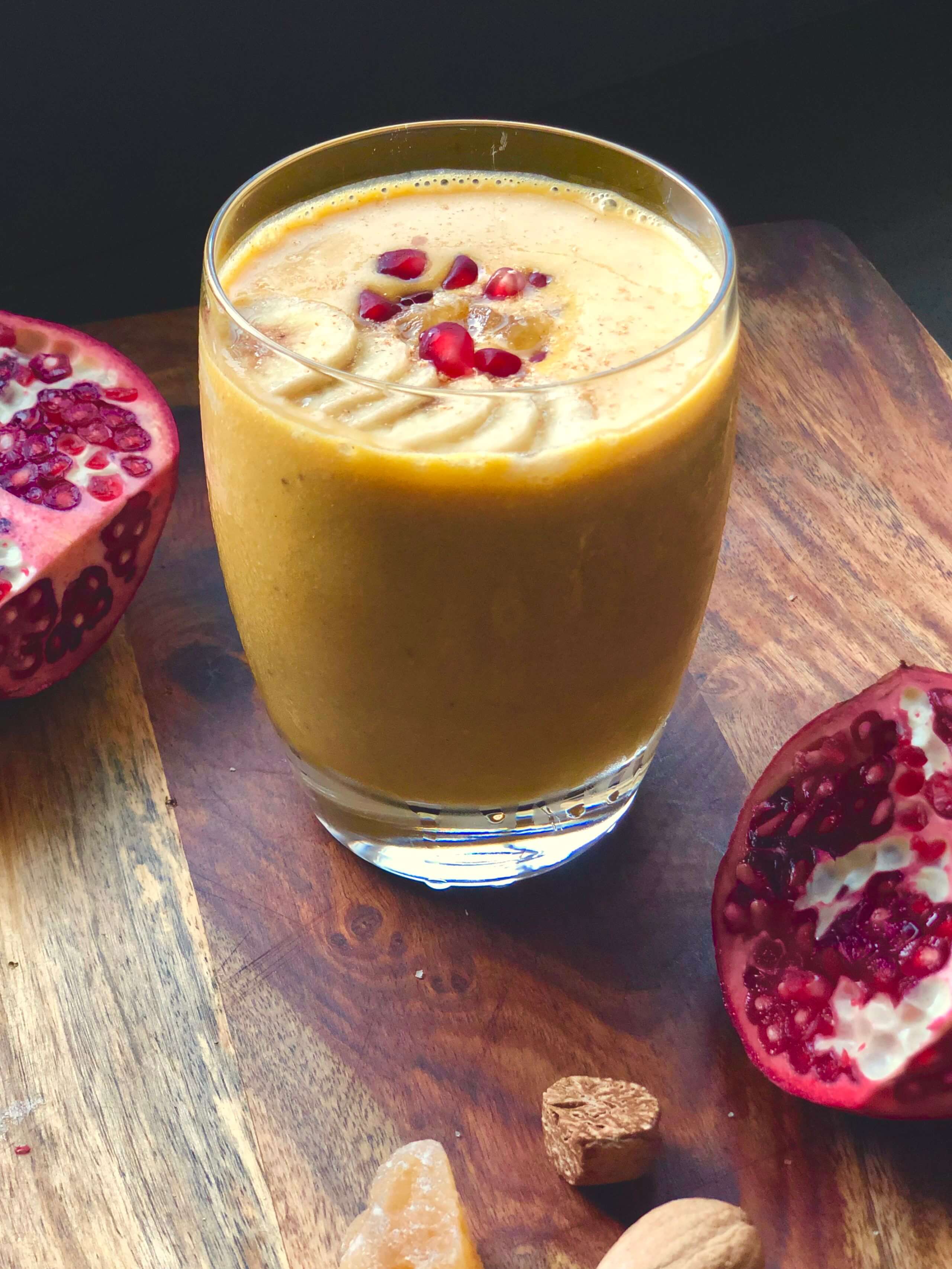
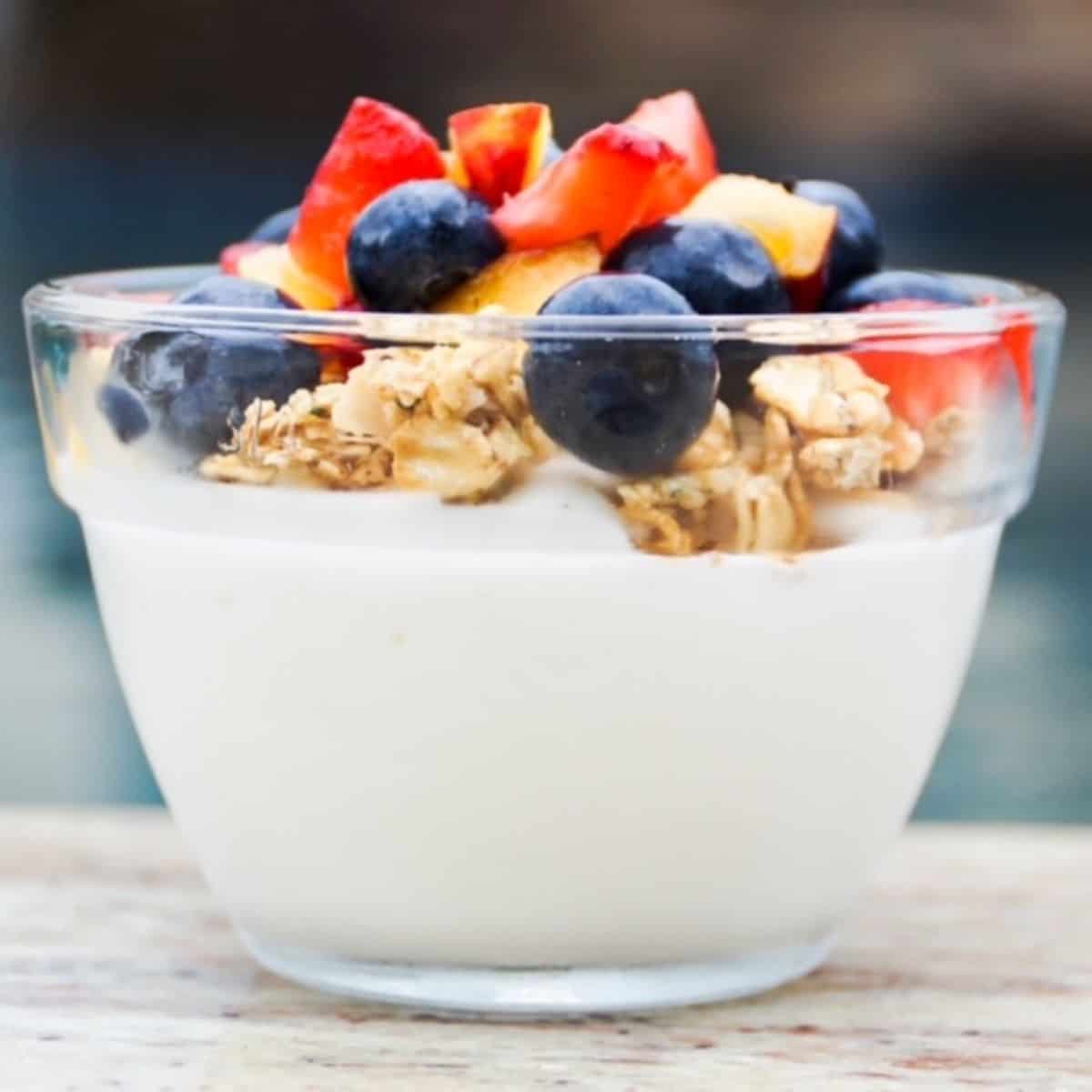
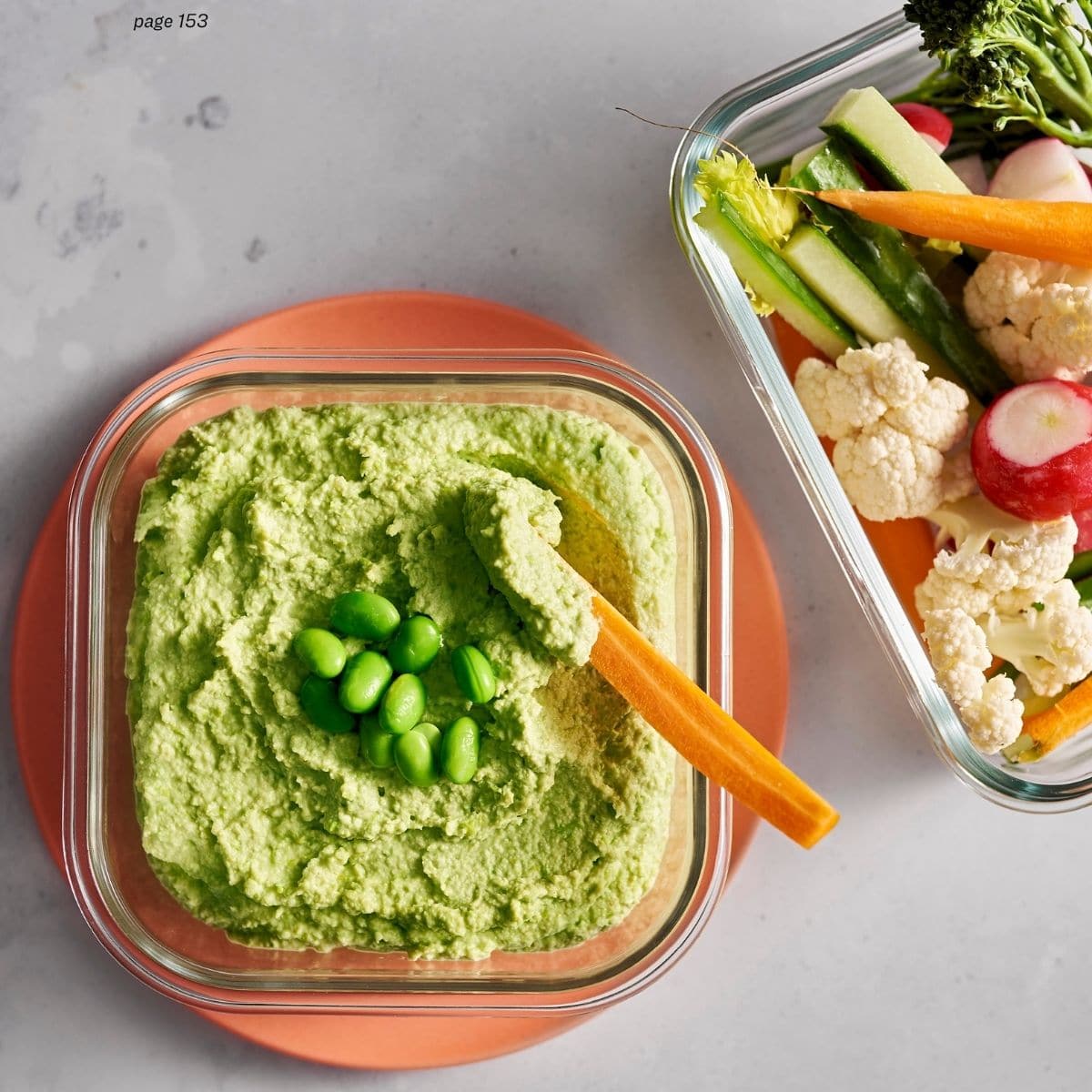

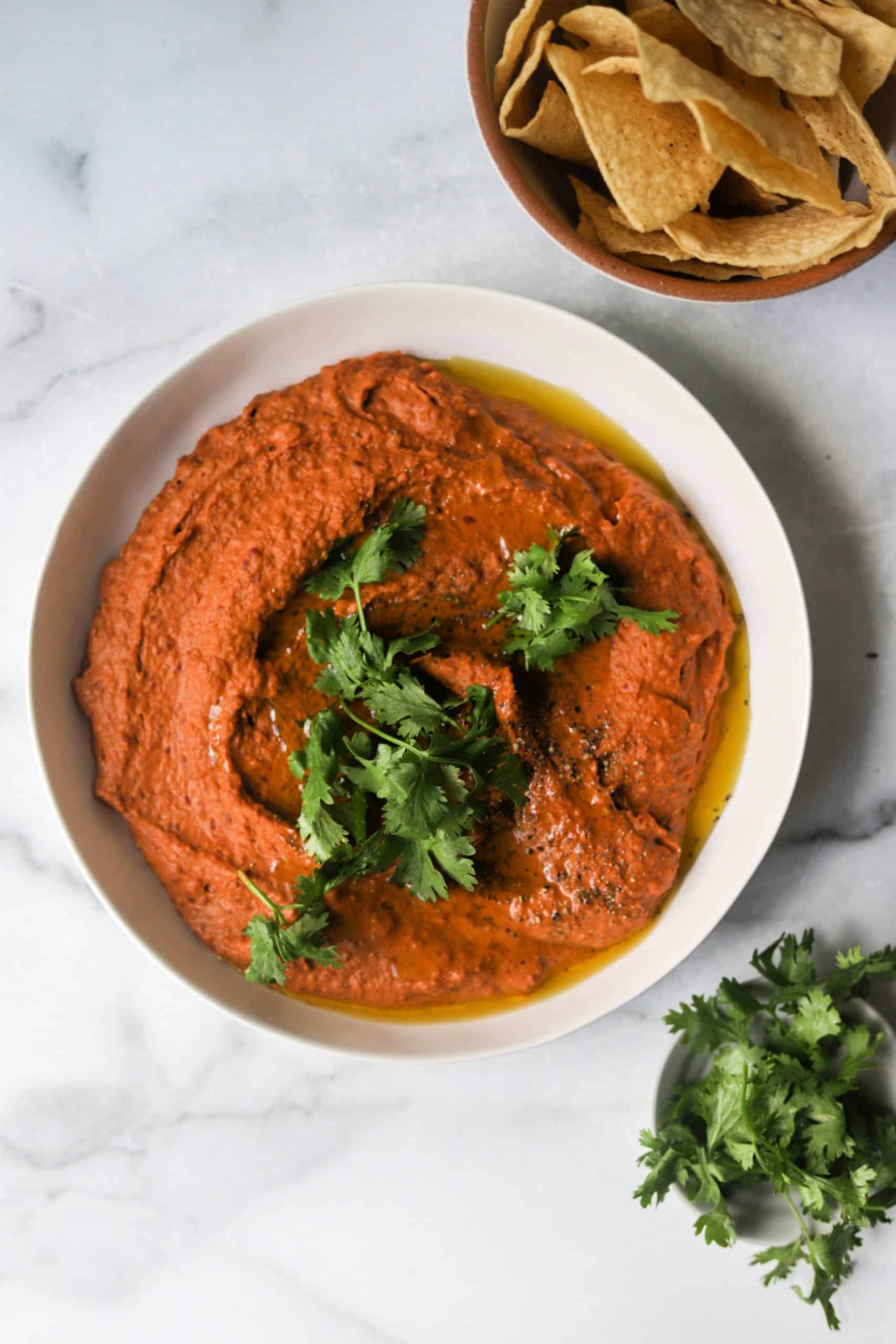
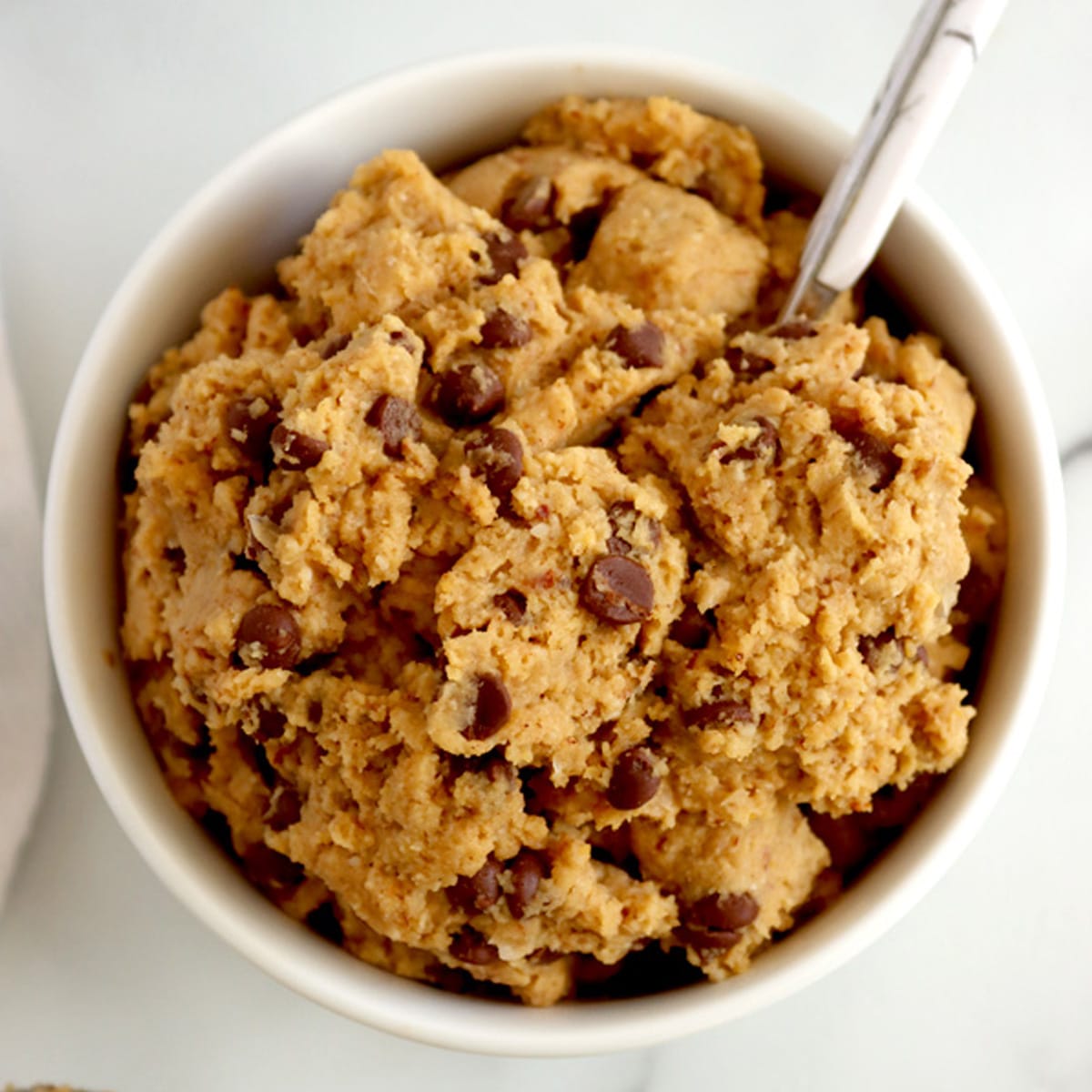
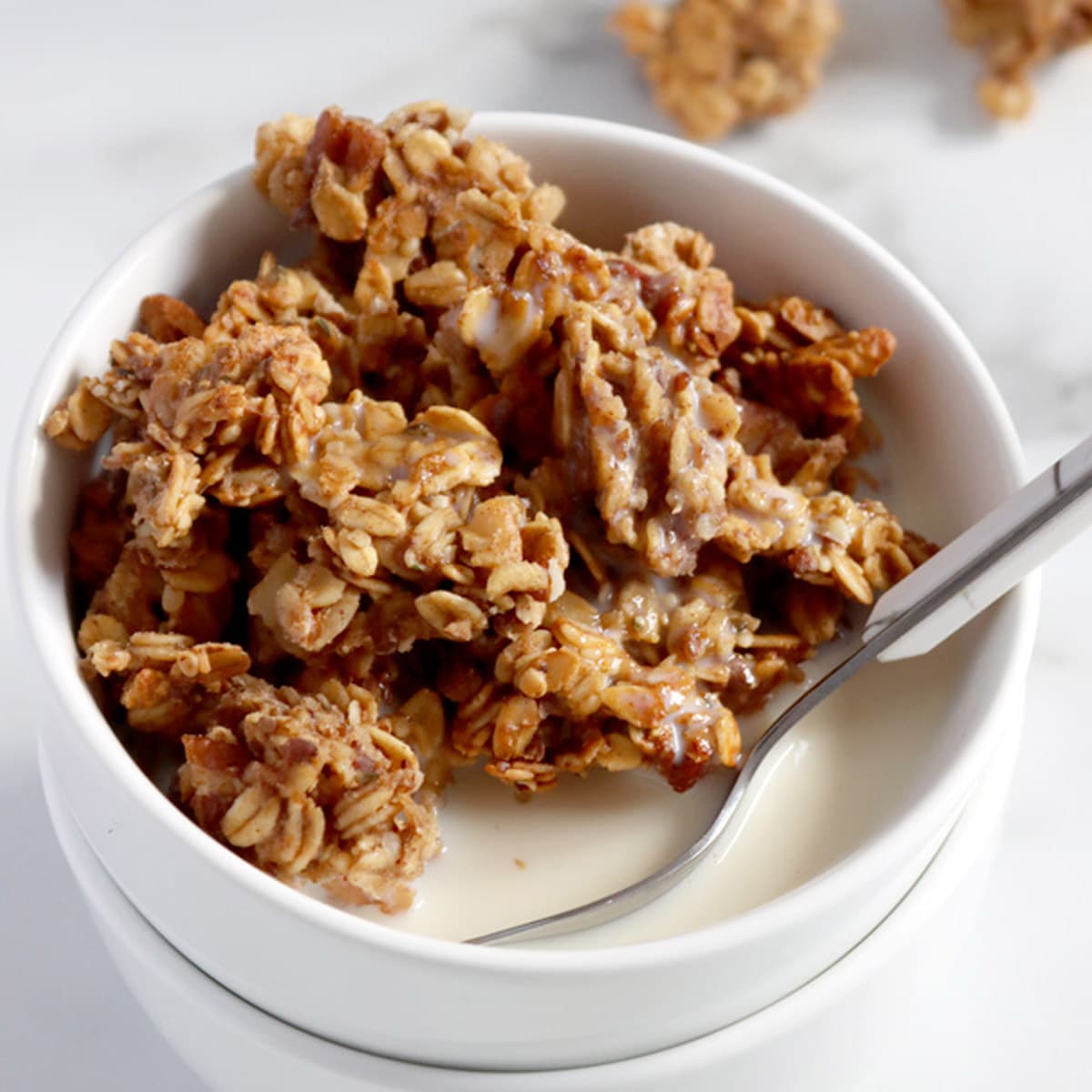





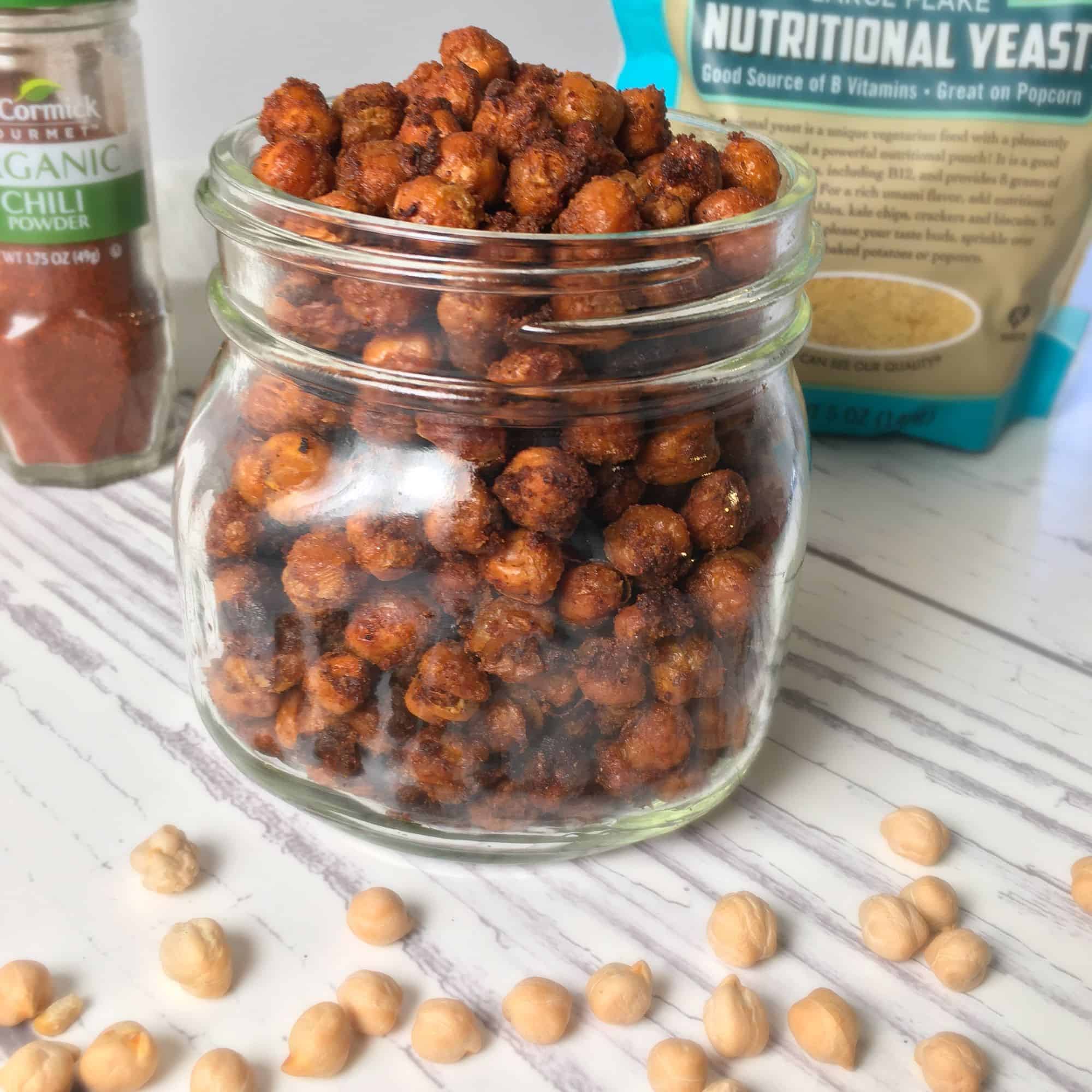






Final thoughts on high protein vegan snacks
High protein vegan snacks are snacks that are free from animal products and contain at least 10 grams of protein per serving. As a dietitian, I often include good sources of protein (5 grams to 9.5 grams) in my recommendations with clients.
Your body needs protein to maintain muscle mass and make tissue. Protein also makes up hormones, enzymes and antibodies. Protein needs vary by individual. In general, research suggests most Americans are getting enough protein.
Plant based protein foods include nuts, seeds, beans, legumes, whole grains, and soy products. Vegetables can also contribute to overall protein intake. Check nutrition labels to see how much protein is in the packaged foods you eat.
Enjoy this selection of dietitian approved high protein snacks!
